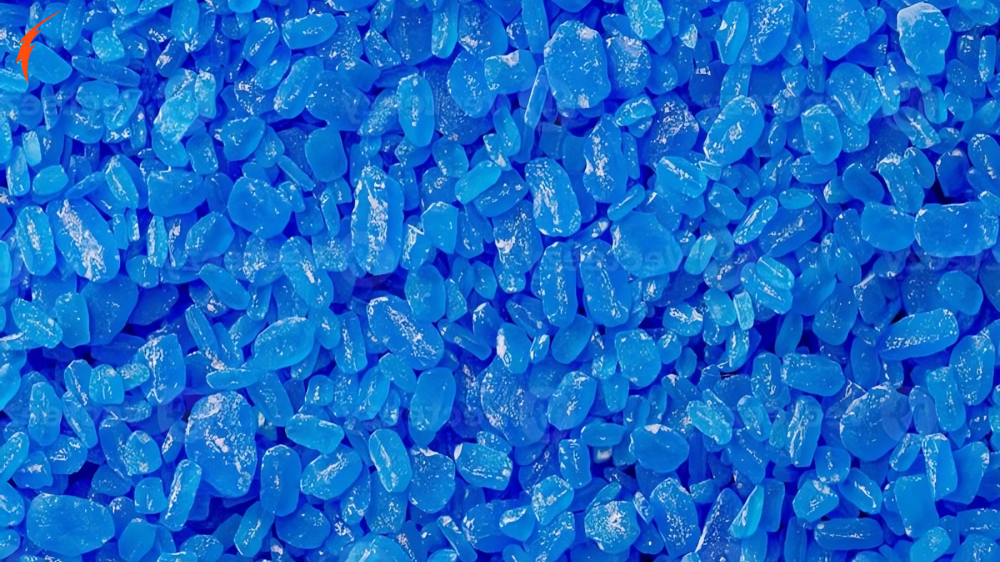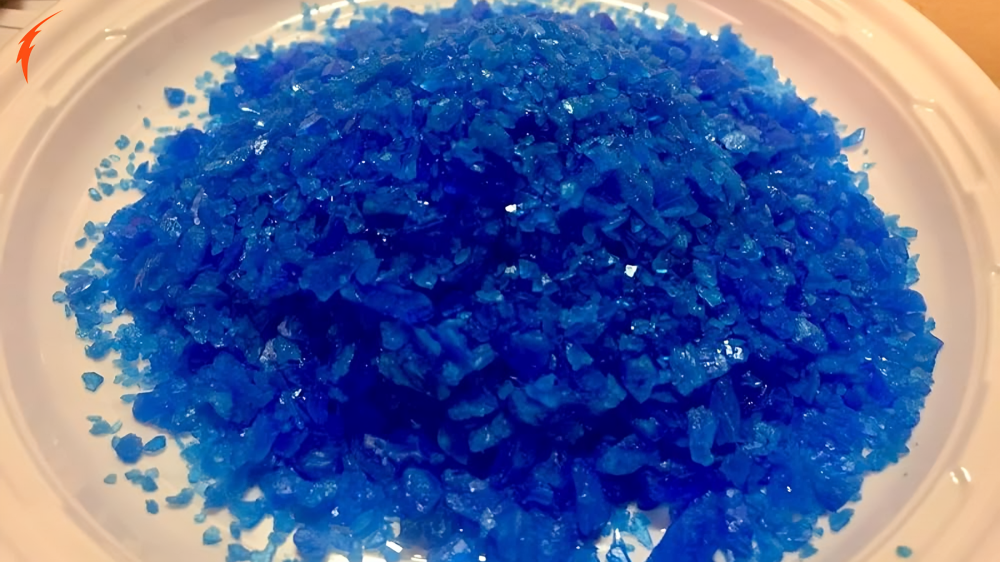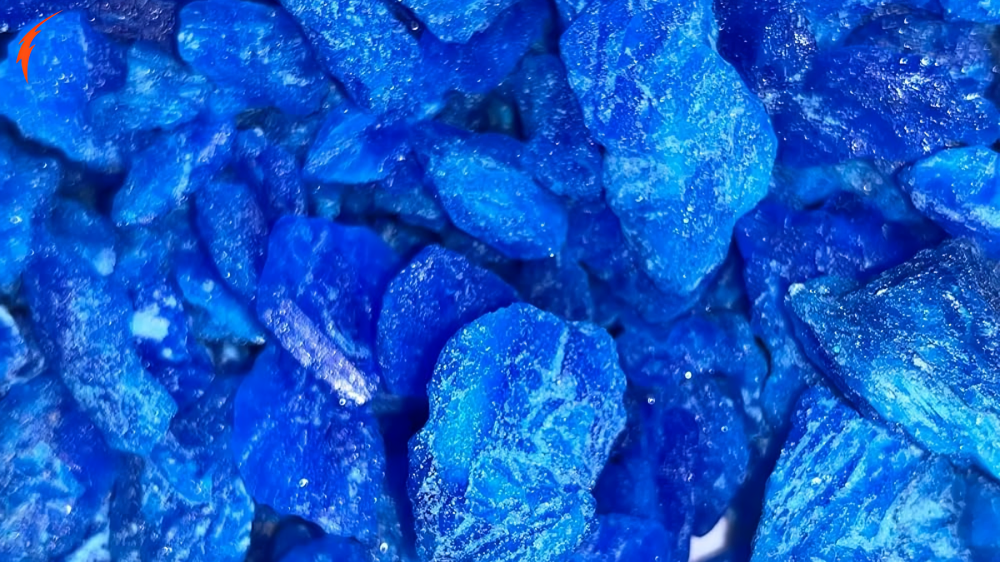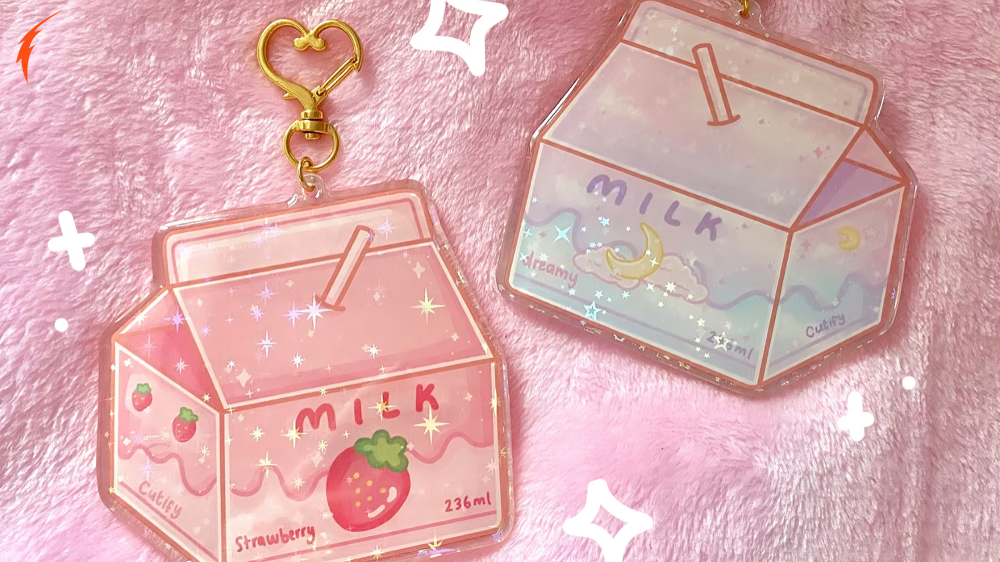Neela Thotha Green Tutiya, also known as copper sulfate, has been used for centuries in various cultures for its medicinal properties. Its name, “Neela Thotha,” stems from the rich blue-green color that is characteristic of copper sulfate in its hydrated form. The substance, composed of copper and sulfur, has been integrated into traditional medicine systems in Asia, the Middle East, and some parts of Europe. These practices have employed Neela Thotha Green Tutiya for treating a range of health conditions, from infections to digestive issues.
In this article, we will dive into the rich history of Neela Thotha Green Tutiya, its traditional medicinal uses, and the science behind its applications. We’ll also explore the ways it is used today in natural remedies, shedding light on its importance in both ancient and modern-day healing practices.
What is Neela Thotha Green Tutiya?
Neela Thotha Green Tutiya (copper sulfate) is a chemical compound that occurs naturally in some areas but is most commonly synthesized for industrial and medicinal uses. It is known for its bright blue-green crystalline form. Chemically, copper sulfate is a salt of copper and sulfuric acid, and its crystal structure gives it that distinct color. It is used in various fields, including agriculture, industrial processes, and medicine.
In traditional medicine, Neela Thotha Green Tutiya has long been associated with its ability to detoxify, heal wounds, and cure various ailments. While modern medicine may view its use cautiously due to potential toxicity at high doses, there are still notable applications of Neela Thotha Green Tutiya in the realm of alternative healing.
Historical Use of Neela Thotha Green Tutiya in Traditional Medicine
The use of Neela Thotha Green Tutiya dates back thousands of years. Ancient civilizations like Egypt, Mesopotamia, and India incorporated copper and its compounds into their medicinal practices. In traditional Indian medicine, or Ayurveda, Neela Thotha Green Tutiya was revered for its curative properties.
- Ancient Egypt: Egyptians are known to have used copper-based compounds for sterilization and healing. They would use Neela Thotha Green Tutiya for treating wounds and infections because of its antimicrobial properties. Copper sulfate was believed to have purifying qualities that could prevent the spread of disease and promote healing.
- Ancient Greece and Rome: In ancient Greece and Rome, Neela Thotha Green Tutiya was used as an astringent and a purgative. Physicians like Hippocrates noted the effectiveness of copper sulfate in treating skin conditions, ulcers, and eye infections. It was also used as an emetic to induce vomiting and cleanse the digestive system.
- Ayurveda and Unani Medicine: Traditional Indian medicine, Ayurveda, has also extensively used Neela Thotha Green Tutiya for various health treatments. It was often used as a topical agent to treat wounds, ulcers, and eye infections. In the Unani system of medicine, widely practiced in the Middle East and South Asia, Neela Thotha Green Tutiya was recognized for its potent purifying and antimicrobial effects.
- Traditional Chinese Medicine: In Chinese medicine, copper sulfate, or Neela Thotha Green Tutiya, was also used to treat fungal infections and skin conditions. It was often combined with other herbal ingredients to balance its potency and reduce toxicity, ensuring its safe use in traditional remedies.

Medicinal Properties of Neela Thotha Green Tutiya
The medicinal properties of Neela Thotha Green Tutiya are rooted in its chemical makeup. Copper, a critical component of the compound, plays an essential role in various physiological processes, including the formation of red blood cells, maintaining immune function, and promoting healthy bones. Sulfur, the other component, also contributes to its healing properties.
Antimicrobial and Antifungal Properties
One of the most recognized medicinal benefits of Neela Thotha Green Tutiya is its antimicrobial and antifungal properties. Copper has been proven to be effective in killing bacteria, viruses, and fungi. Traditional healers have long used Neela Thotha Green Tutiya to treat skin infections, sores, and wounds. Its astringent properties also help in drying out infections and promoting healing.
Detoxification and Cleansing
In Ayurveda, Neela Thotha Green Tutiya was used as a detoxifying agent. It was believed to cleanse the body of harmful toxins, improve digestion, and promote overall health. Although modern science has raised concerns about its internal use due to the potential for copper toxicity, traditional medicine systems valued Neela Thotha Green Tutiya for its ability to “clear heat” and “detoxify” the body, making it a common ingredient in purgative remedies.
Treatment of Eye Conditions
In many traditional systems, including Ayurveda and Unani, Neela Thotha Green Tutiya was used to treat eye infections and conditions like conjunctivitis. Its potent antimicrobial properties make it an ideal treatment for bacterial and fungal infections of the eye. Healers would dilute Neela Thotha Green Tutiya into a solution and apply it as an eyewash or eye ointment.
Digestive Health
In traditional medicine, Neela Thotha Green Tutiya was often used as a purgative to cleanse the digestive system. It was used to treat constipation, indigestion, and other gastrointestinal issues. Although the modern use of copper sulfate for these purposes is less common, the compound was believed to help remove harmful substances from the body and restore digestive balance.
Wound Healing and Skin Health
Copper sulfate’s astringent properties make it an excellent topical agent for treating cuts, wounds, and skin infections. Traditional medicine practices used Neela Thotha Green Tutiya to disinfect wounds, speed up healing, and reduce the risk of infection. It was also used to treat fungal skin conditions, such as ringworm and athlete’s foot.

Modern Use of Neela Thotha Green Tutiya in Traditional Medicine
Today, Neela Thotha Green Tutiya continues to be used in certain traditional medicine practices, though its applications are more limited due to concerns over copper toxicity. However, many practitioners still rely on this ancient remedy for its proven benefits.
Topical Applications
Most modern-day uses of Neela Thotha Green Tutiya are topical. It is used in diluted form to treat fungal infections, minor skin irritations, and wounds. Copper sulfate’s antimicrobial properties make it a valuable tool for disinfecting the skin and promoting healing.
Copper-Based Supplements
In some alternative health practices, Neela Thotha Green Tutiya is used in the form of copper supplements to improve overall health. Copper is an essential trace element necessary for various bodily functions, including maintaining a healthy immune system and supporting bone health. While the use of copper sulfate as an internal medicine is highly regulated due to potential toxicity, it is still used in very small doses in certain dietary supplements.
Natural Pesticide in Agriculture
Beyond its medicinal uses, Neela Thotha Green Tutiya is also valued in agriculture. Traditional farming practices use it as a natural pesticide and fungicide to protect crops. This use, though not directly related to health, reflects the compound’s overall versatility.
Cautions and Risks of Using Neela Thotha Green Tutiya
While Neela Thotha Green Tutiya has numerous benefits, it is important to recognize its potential risks. Copper sulfate can be toxic if ingested in large amounts, leading to symptoms like nausea, vomiting, and even organ failure. Because of this, its internal use has largely fallen out of favor in modern medicine.
Practitioners of traditional medicine should exercise caution when using Neela Thotha Green Tutiya, ensuring that it is applied in safe, diluted forms and never ingested in large quantities. For topical applications, it is essential to use it under the guidance of a qualified practitioner to prevent irritation or allergic reactions.
Neela Thotha Green Tutiya in Today’s Holistic Health Trends
The resurgence of interest in natural remedies and holistic health practices has led to a renewed focus on ancient remedies like Neela Thotha Green Tutiya. Despite the concerns surrounding its toxicity, copper sulfate remains a staple in certain natural healing practices, particularly for topical treatments.
With increasing awareness of the dangers of synthetic chemicals and medications, many people are turning back to traditional methods of healing that incorporate naturally occurring substances like Neela Thotha Green Tutiya. This trend underscores the enduring importance of this ancient compound in both historical and modern healing practices.
The Science Behind Neela Thotha Green Tutiya
While the traditional uses of Neela Thotha Green Tutiya in medicine are well-documented, modern science has also begun to explore the compound’s properties. Copper sulfate, the scientific name for Neela Thotha Green Tutiya, is a well-known chemical in various industries, from agriculture to healthcare. To fully appreciate the medicinal applications of this compound, it’s important to understand the science behind its components and effects on the human body.
Copper’s Role in the Body
Copper is an essential trace mineral that plays a crucial role in many biological processes. It is necessary for the proper functioning of enzymes that aid in the formation of red blood cells, the absorption of iron, and the regulation of immune function. Copper also supports the development of connective tissue, bone, and the brain. This highlights why Neela Thotha Green Tutiya, with its high copper content, was seen as beneficial in traditional remedies.
One key enzyme that relies on copper is superoxide dismutase, an antioxidant enzyme that protects cells from oxidative damage caused by free radicals. This antioxidant property is one reason why copper, and by extension Neela Thotha Green Tutiya, are believed to help detoxify the body and promote overall health.
Antimicrobial Mechanism
One of the main reasons Neela Thotha Green Tutiya has been used in medicine is its antimicrobial properties. The copper ions in the compound disrupt the structure of microbial cell membranes and interfere with their metabolic functions, leading to the death of harmful bacteria and fungi. This explains why Neela Thotha Green Tutiya was historically used to treat infections and clean wounds.
Copper sulfate has been shown to have potent effects on a wide range of microorganisms, including bacteria, fungi, and algae. This broad-spectrum antimicrobial activity makes it an excellent tool for treating skin infections, fungal overgrowth, and other microbial issues. However, because copper ions can also affect human cells, it is important to use Neela Thotha Green Tutiya in controlled amounts to avoid tissue damage.
Wound Healing and Skin Regeneration
The use of Neela Thotha Green Tutiya for treating wounds and skin conditions can be supported by modern research into copper’s role in skin health. Copper peptides are known to stimulate collagen production, which aids in the repair of skin and connective tissue. This supports faster wound healing and helps in the regeneration of skin cells.
Additionally, copper’s anti-inflammatory properties can help reduce swelling and irritation in wounds, contributing to a faster recovery. In traditional medicine, Neela Thotha Green Tutiya was applied to cuts, burns, and ulcers to clean and promote healing, a practice supported by these scientific insights.
Copper Sulfate as an Antioxidant
In Ayurveda and other traditional systems, Neela Thotha Green Tutiya was believed to purify the body and rid it of harmful toxins. While some of this might be attributed to spiritual or symbolic meanings, copper itself does have antioxidant properties that protect cells from oxidative stress. Oxidative stress, caused by an excess of free radicals in the body, has been linked to chronic diseases, aging, and cellular damage.
As a result, the use of Neela Thotha Green Tutiya as a detoxifying agent aligns with its antioxidant capacity. However, the potential for copper toxicity emphasizes the need for careful use and dosage when employing this compound in any treatment.

Neela Thotha Green Tutiya in Modern Herbal Medicine
Despite the rise of modern pharmaceuticals, many natural health practitioners continue to use Neela Thotha Green Tutiya in their practices, albeit with greater caution and oversight. The application of Neela Thotha Green Tutiya is often limited to topical treatments, and when used internally, it is done so in minuscule, carefully controlled doses.
Homeopathy and Alternative Remedies
Homeopathy, a system of alternative medicine that operates on the principle of “like cures like,” often uses highly diluted forms of substances, including Neela Thotha Green Tutiya. In homeopathy, copper sulfate is used to treat a range of conditions, including muscle cramps, digestive disturbances, and anxiety. The extreme dilutions used in homeopathy mitigate the risks associated with copper sulfate’s toxicity, making it a safer option for internal use.
Modern Ayurvedic Practices
In modern Ayurvedic practice, Neela Thotha Green Tutiya may still be used in external treatments for skin ailments, such as eczema, psoriasis, and fungal infections. Ayurvedic practitioners are cautious about the compound’s use, ensuring that it is applied in safe, diluted forms to avoid any negative effects. In some cases, Ayurvedic treatments using Neela Thotha Green Tutiya are combined with other herbs and oils to balance its strength and enhance its healing properties.
Copper-Based Skincare Products
Copper has become a popular ingredient in modern skincare, with many products featuring copper peptides to promote skin healing, reduce the appearance of wrinkles, and enhance collagen production. Although these products typically use copper in a more refined form than Neela Thotha Green Tutiya, their use in skincare is rooted in the same principles of healing and rejuvenation. Copper-based creams, ointments, and serums often capitalize on copper’s anti-inflammatory and skin-repairing properties.
The Future of Neela Thotha Green Tutiya in Medicine
As the trend toward natural remedies and holistic health continues to grow, the use of traditional compounds like Neela Thotha Green Tutiya may see a resurgence. Researchers are currently investigating the potential of copper and copper-based compounds for new medical applications, including cancer therapies, antimicrobial coatings for medical devices, and treatments for chronic skin conditions.
Antimicrobial Coatings
One promising area of research is the use of copper sulfate in antimicrobial coatings for medical devices. Copper’s ability to kill harmful bacteria and fungi makes it an ideal candidate for reducing infections in hospitals, especially in environments where antibiotic-resistant strains of bacteria are prevalent. Medical devices coated with copper-based compounds could help prevent infections and improve patient outcomes.
Cancer Research
Some studies have suggested that copper may play a role in cancer treatment, as it is involved in the regulation of angiogenesis, the process by which tumors develop their own blood supply. Researchers are investigating whether Neela Thotha Green Tutiya or other copper compounds could be used to inhibit this process, potentially slowing the growth of tumors.
New Applications in Dermatology
Given its benefits for skin health, Neela Thotha Green Tutiya could be explored further for use in treating chronic skin conditions like acne, rosacea, and dermatitis. The rise of natural skincare and wellness products has renewed interest in traditional remedies, and Neela Thotha Green Tutiya may become a popular ingredient in new dermatological treatments.
More: Reddit
Conclusion
Neela Thotha Green Tutiya, or copper sulfate, has a rich history in traditional medicine, dating back thousands of years. Its antimicrobial, detoxifying, and healing properties made it a valuable tool for ancient healers, and its uses have persisted into modern times. While the internal use of copper sulfate is limited due to toxicity concerns, its external applications continue to thrive in both traditional and alternative medicine.
From Ancient Egypt to Ayurveda, Neela Thotha Green Tutiya has proven to be a versatile and powerful remedy. Whether used to treat infections, heal wounds, or detoxify the body, it remains a staple in natural healing practices. As modern science continues to explore the potential of copper and its compounds, the future of Neela Thotha Green Tutiya in medicine looks promising, with new applications on the horizon.



